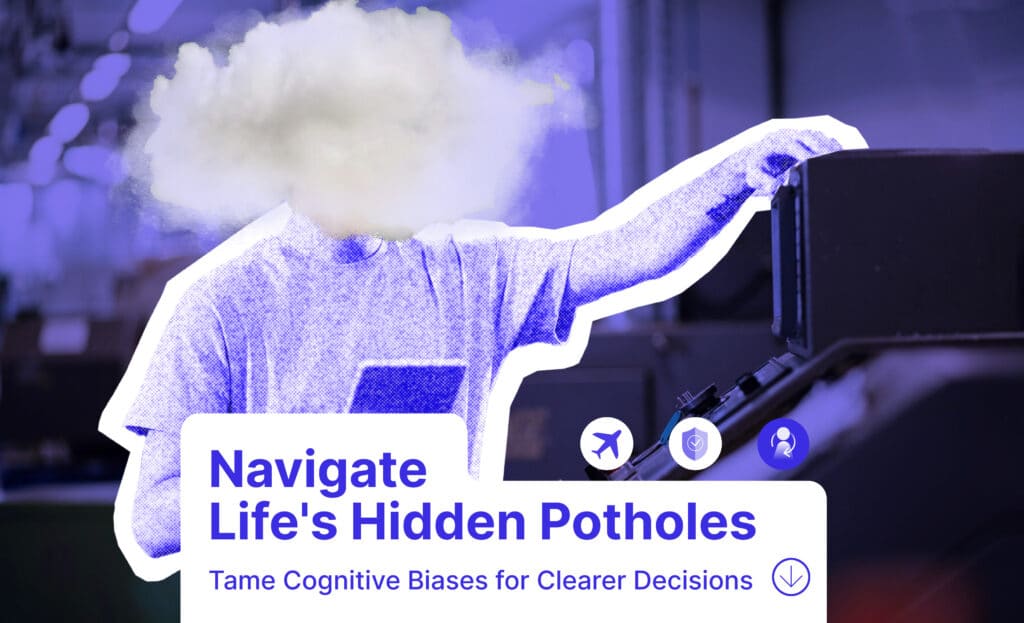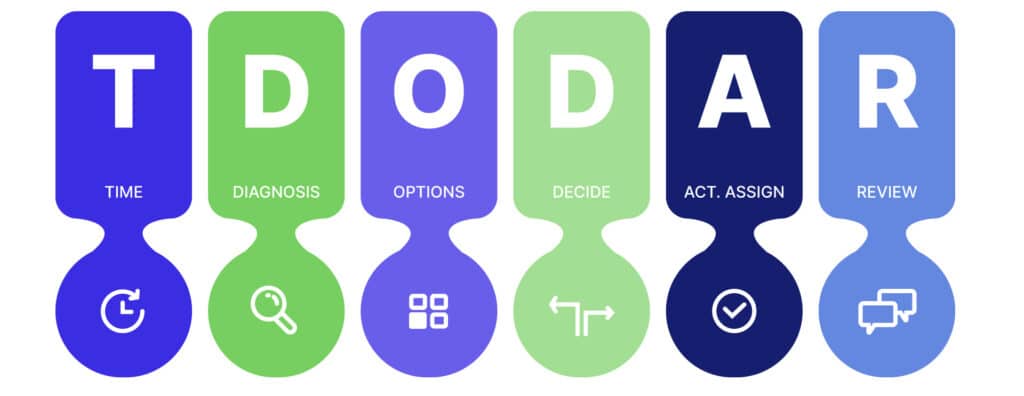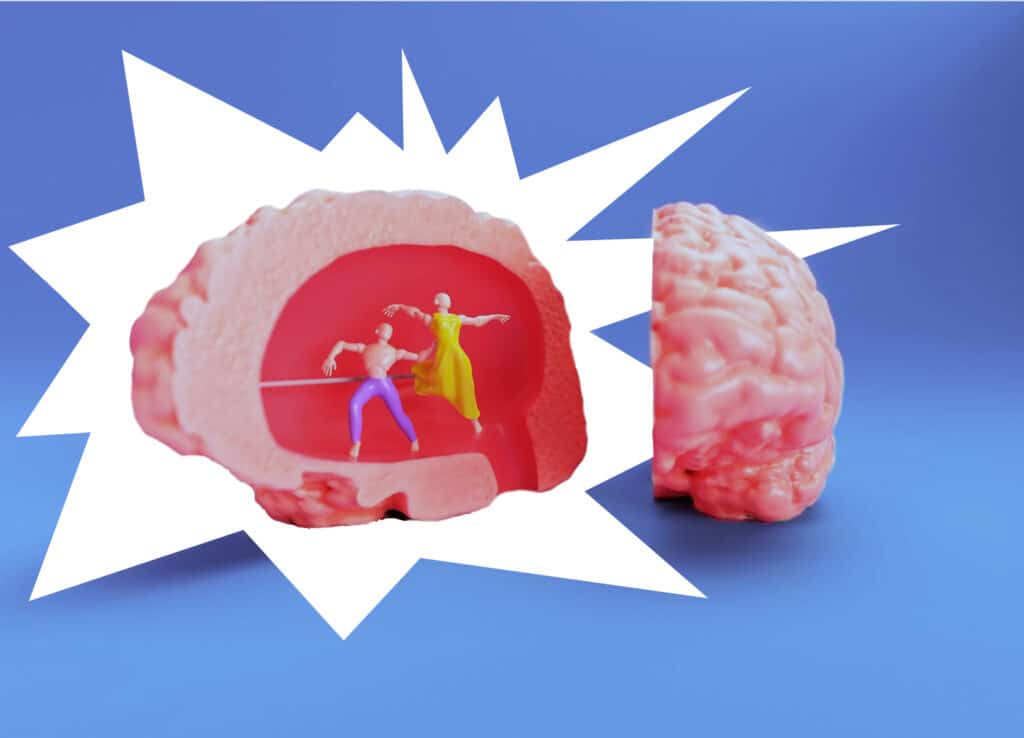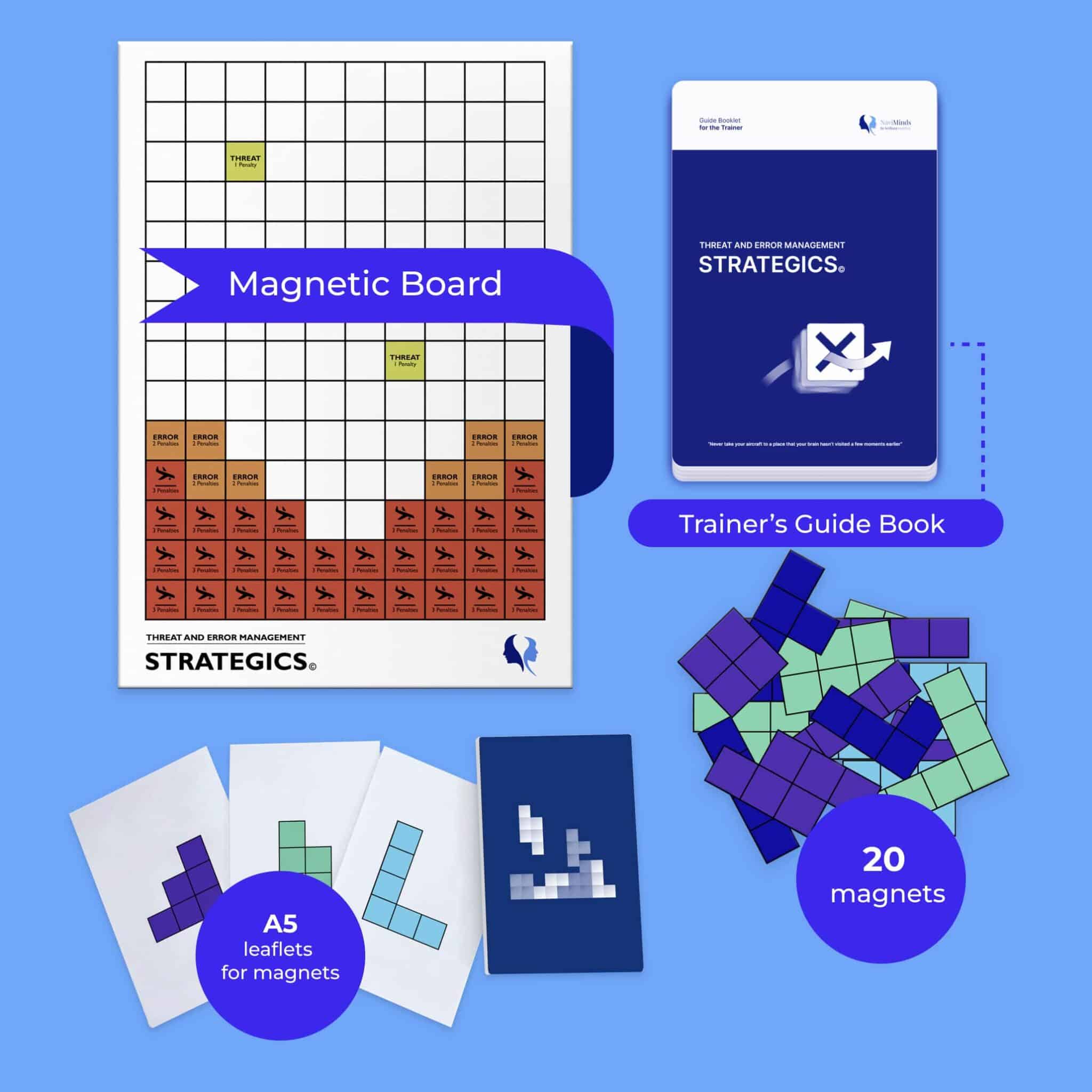
You have cognitive bias, I have cognitive bias, and your next-door neighbour has cognitive bias.
For better or worse, in sickness and in health, cognitive biases impact our judgment, decision-making, and understanding of the world around us.
A cognitive bias is a systematic pattern of deviation from norm or rationality in judgment.
Cognitive bias occurs because our brains are wired to simplify information processing through filters shaped by our experiences and preferences.
This filtering is a coping mechanism that allows us to quickly prioritize and process large amounts of information.
Effective? Absolutely!
Good for rational decision-making? Not so much…
Cognitive biases, first introduced by Amos Tversky and Daniel Kahneman in 1972, highlight our brains’ quirky ways of processing information. They explain why we sometimes make questionable decisions or form faulty judgments.
Some of these cognitive biases are related to memory: The way you remember an event may be biased for a number ofreasons, which can lead to biased thinking and decision-making.
Other cognitive biases might be related to problems with attention (hello phones) since attention is a scarce resource in this digital age, people, yes you and I included, have to be selective about what we pay attention to.
Let’s dive into a few common cognitive biases that sneak into our daily lives:
1. Actor-observer bias: The tendency to credit our actions to external causes while attributing others’ actions to their internal characteristics. For instance, you might blame a poor presentation on your jet lag, but if a colleague botches theirs, you might think they’re unprepared.
2. Affinity bias: The tendency to favour people who are most like ourselves. It’s why we might be more inclined to hire someone who shares our hobbies or background.
3. Anchoring bias: Relying too heavily on the first piece of information received (the “anchor”) when making decisions.For example, if a car dealer starts with a high price, any subsequent lower price seems like a great deal, even if it’s not the best price.
4. Attentional bias: The tendency to focus on specific information while ignoring other relevant information. Ever notice how once you start thinking about buying a red car, you suddenly see red cars everywhere?
5. Availability bias: Estimating the likelihood of events based on how easily examples come to mind. Like thinking plane crashes are common because they’re heavily reported in the news.
6. Bandwagon effect: The tendency to adopt certain behaviours or beliefs because many others do. If everyone else thinks it’s cool to wear neon, suddenly, it doesn’t seem so bad.
7. Blind spot bias: Recognising biases in others but failing to see them in ourselves.
8. Clustering illusion: The brain’s tendency to see a pattern in a random sequence of numbers or events.
9. Confirmation bias: Confirmation bias means searching for or interpreting information that confirms preconceptions. For instance, if you think a brand is unreliable, you’ll notice and remember negative reviews while ignoring positive ones.
10. False consensus effect: Overestimating how much others agree with you. If you love pineapple on pizza, you might think everyone does.
11. Framing: The way information is presented can significantly affect decisions. For example, people might react differently to “90% fat-free” than to “10% fat.”
12. Functional fixedness: Seeing objects as only working in a particular way. For instance, not realising you can use a coin as a screwdriver.
13. Halo effect: The tendency to let an overall impression of a person influence our feelings and thoughts about their character. For instance, assuming that because someone is attractive, they must also be smart and kind. For example, job applicants perceived as attractive and likeable are also more likely to be considered competent, intelligent, and qualified.
14. Hindsight bias: Viewing past events as being more predictable than they actually were. After an event happens, people often believe they “knew it all along.”
15. Implicit bias: Attributing positive or negative qualities to a group of individuals without factual basis. This can lead to stereotyping and unfair judgments.
16. Negativity bias: Placing more significance on negative events than positive ones. We remember criticisms more than compliments.
17. Optimism bias: Overestimating the likelihood of positive events and underestimating the likelihood of negative ones. For instance, believing that while everyone else gets divorced, your marriage is immune.
18. Overconfidence effect (The Dunning-Kruger effect): Overestimating one’s abilities or knowledge.
19. Physical attractiveness stereotype: The tendency to assume physically attractive people also possess other desirable personality traits.
20. Priming bias: Being influenced by the first information we see, which shapes our perceptions and decisions. If you hear a car is “reliable” at the start, you’ll likely judge it as such.
21. Proximity bias: Giving preferential treatment to people who are physically close. For example, a boss might favor in-office employees over remote ones, simply due to their physical presence.
22. Recency bias: Placing more importance on the latest information received. Recent performance often weighs more heavily than past achievements in evaluations.
23. Self-serving bias: Attributing successes to ourselves and failures to external factors. If you ace a test, it’s because you’re smart; if you fail, it’s the teacher’s fault.
24. Status quo bias: Preferring things to stay the same rather than change. People tend to stick with default options because they seem safer and less risky.
25. Sunk cost effect: Continue investing in something that’s not working to avoid feeling like a failure. For instance, keeping a poor stock because you’ve already invested so much money.
Despite our best intentions, cognitive biases are sneaky.
We like to think that when we make judgments and decisions about the world around us, we are objective, logical, and capable of absorbing and evaluating all the information that is available. Unfortunately, we all live in a glass house… despite throwing the occasional rock.
Here are some classic signs of cognitive biases:

Imagine you’re on trial for suspected fraud, and you didn’t do it. You’d want the jury to focus only on the relevant facts, weigh all the evidence fairly, and ignore irrelevant details, right? Sadly, this ideal scenario is more of a fairy tale than a reality.
Even judges, with all their training and experience, aren’t immune to cognitive biases. Something as simple as the time of day can affect their decisions. Yes, you might get a lighter sentence right after lunch!
Cognitive biases can sneak into nearly every decision we make daily, causing issues like:

Must we live under the thumb of our biases?
Are we forever at the mercy of our flawed mental processes?
Not necessarily!
Here are five strategies to combat cognitive biases:
1. Cognitive Training: Research suggests that training can help minimize cognitive biases. For example, a study found that participants who were educated about biases and how they influence decisions showed a 29% reduction in biased thinking.
2. Reflect on Influences: Consider factors like overconfidence or self-interest that might sway your decisions. A little self-awareness goes a long way.
3. Challenge Your Biases: Question your assumptions and seek opposing viewpoints. Ask yourself, “What am I missing here?”
4. Seek Diverse Perspectives: Engage with people from different backgrounds and viewpoints. It’s enlightening and helps broaden your perspective.
5. Reflect on Past Decisions: Learn from past mistakes and successes. If you promised yourself you’d make coffee at home to save money but always ended up at the café, reconsider that new bag purchase!
Example 1: Anchoring Bias in Sales: When Apple introduced the iPhone at $600, then quickly discounted it to $400, it seemed like a steal. The $600 anchor made the $400 price appear much more attractive.
Example 2: Bandwagon Effect in Medical Diagnosis: In an ER, a doctor might quickly discharge a patient labeled as a drug seeker by the nurses. Due to this bandwagon effect, the doctor doesn’t take the necessary steps to arrive at a correct diagnosis and misses that the patient has appendicitis.
Example 3: Availability Bias in Travel Perceptions: Many believe flying is more dangerous than driving because plane crashes, though rare, are more dramatic and heavily reported.
Example 4: Halo Effect in Academic Evaluations: In one study, male students rated essays written by female authors. Some were poorly written, and others were well written. A photograph of the author accompanied some of the essays. The male students rated the essays higher if they believed the author was attractive, even for those deliberately poorly written essays, showing how perceived attractiveness can influence judgments.
Cognitive biases are like hidden potholes on the road of life. By recognizing and understanding them, we can navigate more smoothly, avoiding unnecessary detours and bumps.
So, next time you’re about to make a snap decision, pause and ask yourself: is this my brain taking a shortcut?
Our human brains aren’t wired like objective computational machines with unlimited storage.
So, in a world like aviation, we need strategies to help us overturn or at least limit the number of decisions affected by these biases. Enter: decision-making models.
A simple tool designed to heighten our decision-making capabilities. My personal favourite is the TDODAR model:



During our CRM trainer courses, I typically introduce it in one of two ways. Option one is straightforward: I introduce the concept, explain the acronym and its meaning, and then initiate a discussion about the benefits of using a decision-making model like TDODAR. This approach works well when time is limited.
Option two, my personal favourite, involves an exercise called STRATEGICS©. The exercise involves a magnetic gameboard filled with various threats and errors. Each participant receives magnetic game pieces of different shapes and colours, and their task is to place these pieces on the gameboard while following a structured decision-making process. The goal? Minimize the threats and errors presented on the gameboard.

Participants get two rounds to try this exercise. In the first round, they don’t use any decision-making model. In the second round, they’re “forced” to use TDODAR.
Which round do they perform better in?
I’ve witnessed countless “aha” moments when participants realize the stark difference a structured model makes.
So give it a try! Whether navigating the skies or the everyday challenges of life, a decision-making model like TDODAR can be your compass, steering you towards better, more rational decisions.
Dive into our other training articles.
© 2024 NaviMinds – Designed by Aveo web&marketing